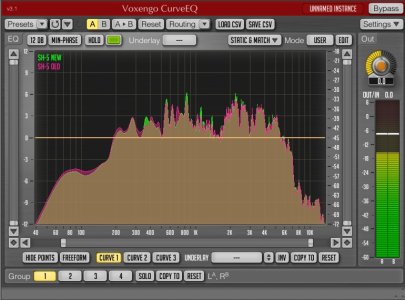LLL
New member
Re: Why Doesn't Seymour Duncan Fix The Custom Custom SH-11 EQ Chart?
Speaking of accurate information and the Custom family of pickups...
Here's a spectrum analysis (average over time) of my pre-1983 SH-5 Custom (DCD) vs. my 2013 SH-5 Custom:

That should tell ya how the pickup would perform frequency-wise.
(also proves that ceramic mags hold up over time)
Speaking of accurate information and the Custom family of pickups...
Here's a spectrum analysis (average over time) of my pre-1983 SH-5 Custom (DCD) vs. my 2013 SH-5 Custom:

That should tell ya how the pickup would perform frequency-wise.
(also proves that ceramic mags hold up over time)

